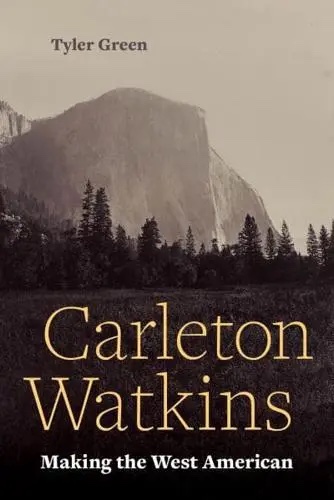
Carleton Watkins made photographs that secured business deals for industrialists. He made photographs that offered conclusive scientific proof to geologists. He made photographs that were both commodities and souvenirs. And he even made photographs in order to give evidence in corporate law. Dominated thus by clients, Watkins is presented, in Tyler Green’s 2018 biography, squarely, as an artist.
HIs art inheres in technical innovation and an eye for composition. The photographer built his own ‘mammoth plate’ camera (almost as large as it sounds). He found vantage points in the wilderness that were to convey both scale and steepness, just some of the elusive qualities of ‘being there’. I concur in Green’s characterisation of his subject as artist, despite those commercial and scientific interests. A mere cameraperson could not have changed the course of US history, in ways both cultural and political. He was both instrumental and inspirational to expansion into the West.
The fascinating central aspect of this book is the way in which ideas about this region were more or less invented by this pragmatic artist, at the time working hand in glove with some of the nation’s wealthiest business tycoons. Yet somehow, whatever brief he was working to, Watkins managed to create artefacts of great, and quite unnecessary, aesthetic appeal.
Of course, there is no reason why rich folk and politicians should not appreciate some beauty in their everyday working lives. But in nineteenth century San Francisco, so many of these types were exploiting the pictured environment in the course of railroad, water, and mining ventures. Accordingly, Watkins’ art seems frequently like window dressing for the big league. But his vision is ultimately stronger than that of the various capitalists with whom he collaborates.
Through the lens of this pioneer, the West appears a land of awesome natural power. If presented as untouched, it appears primordial. Where populated, sparsely, it is an Eden. In Watkins’ lifetime and through Watkins’ influence, tourism became a real phenomena in this part of the world. And would-be photographers were to demonstrate by their various failures, just how grandiose were Watkins’ achievements.
He did sell from a gallery. In fact he had two consecutive spaces in San Francisco. He lost stock and records to the 1906 earthquake which must have made Green’s job of assembling the pieces of a life extremely difficult. However the author was spurred on by an eerie connection. It emerges in the course of his research, in a conversation with his father, that Watkins’ major patron, William H. Lawrence, was Green’s great-great-grandfather and one of a number of entertaining characters who appear in the milieu of the western frontier at this time.
Readers will at this point recognise that this tenacious and admiring book is spurred by something greater than opportunistic interest. Carleton Watkins: Making the West American is born of a clear passion for a good story; Watkins’ works, while so often instrumental, were passionately adherent to the need for a good picture.
Carleton Watkins: Making the West American is published by California University Press and can be purchased from Blackwells or elsewhere.
No Comments